
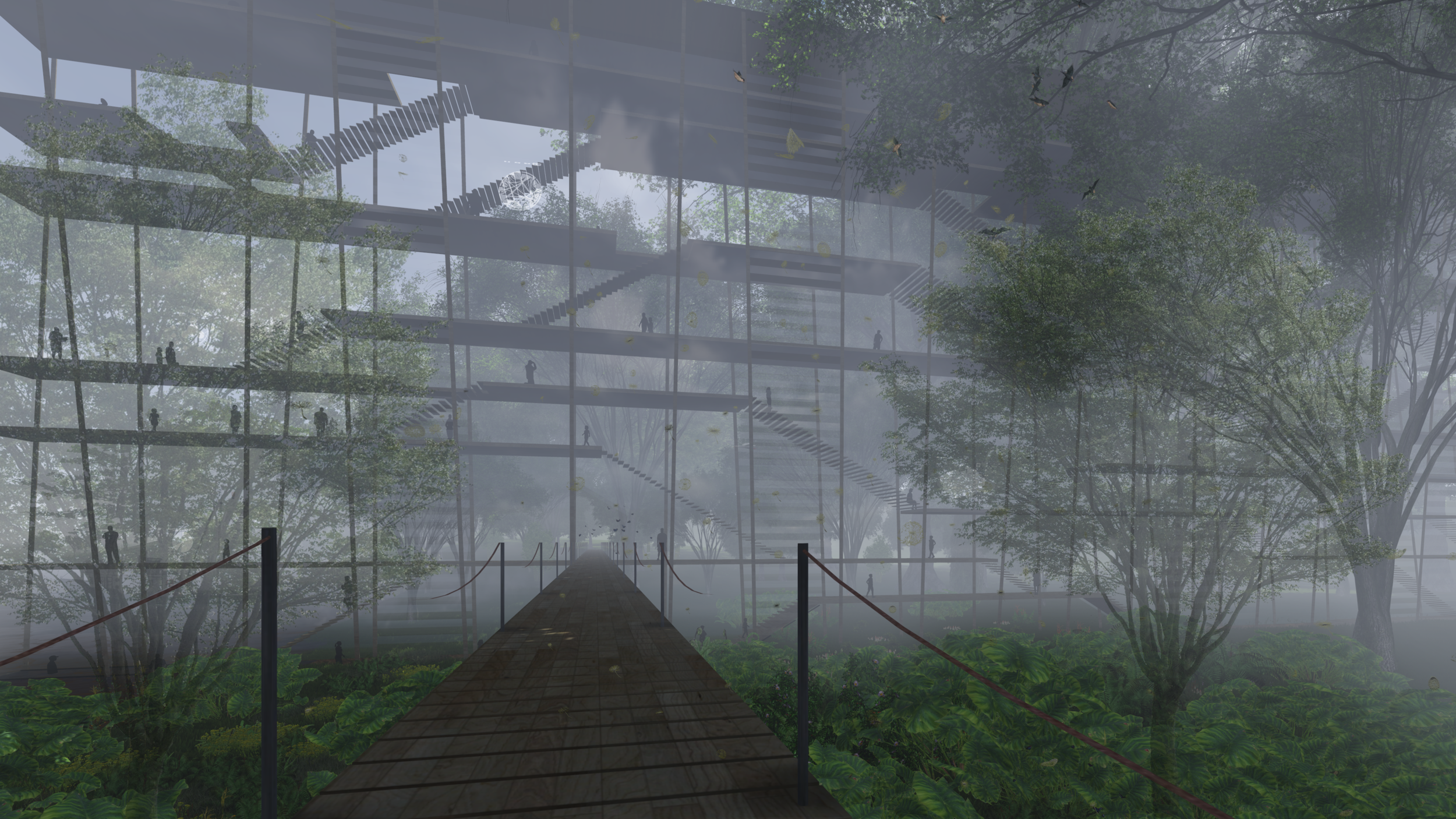
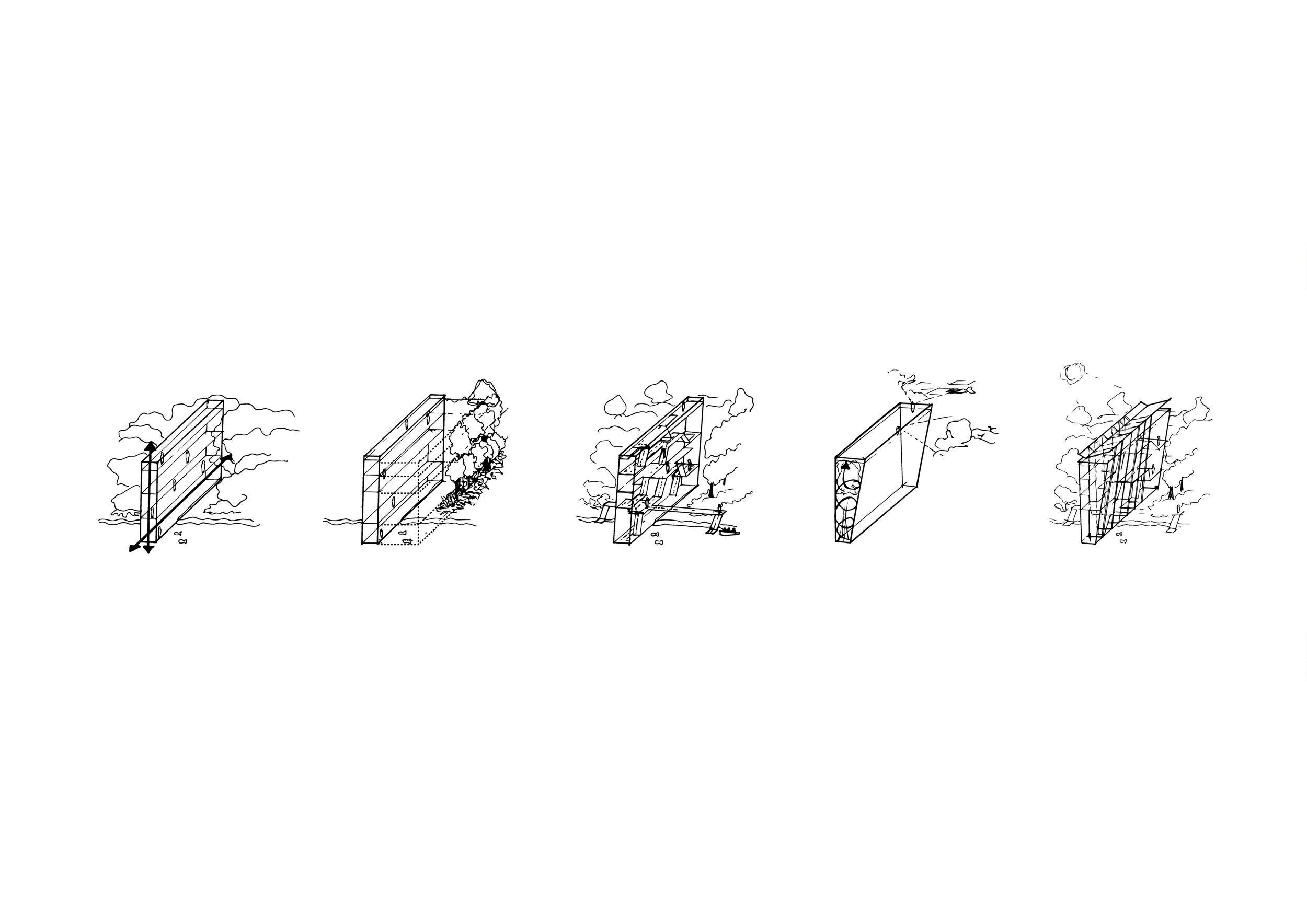
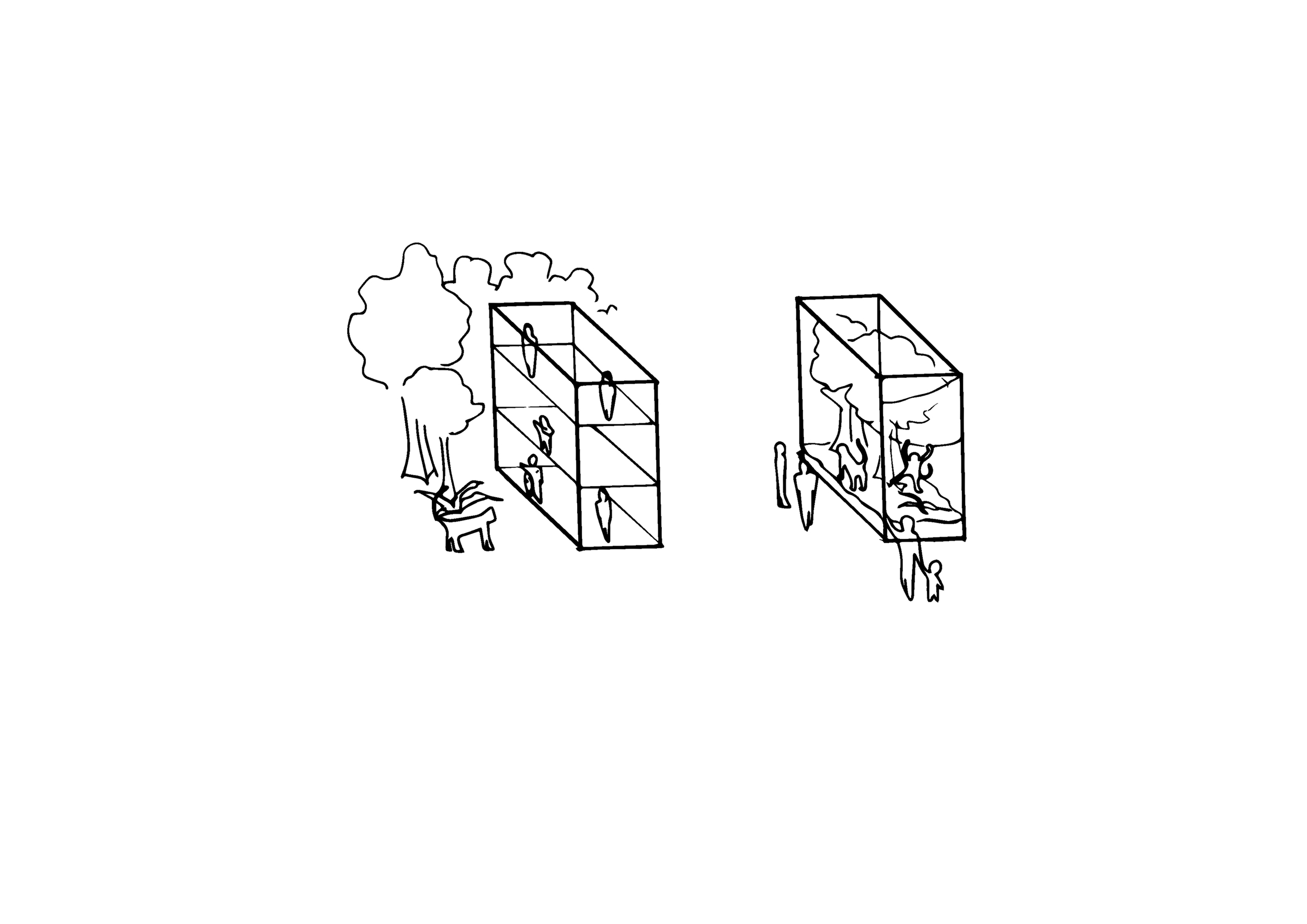

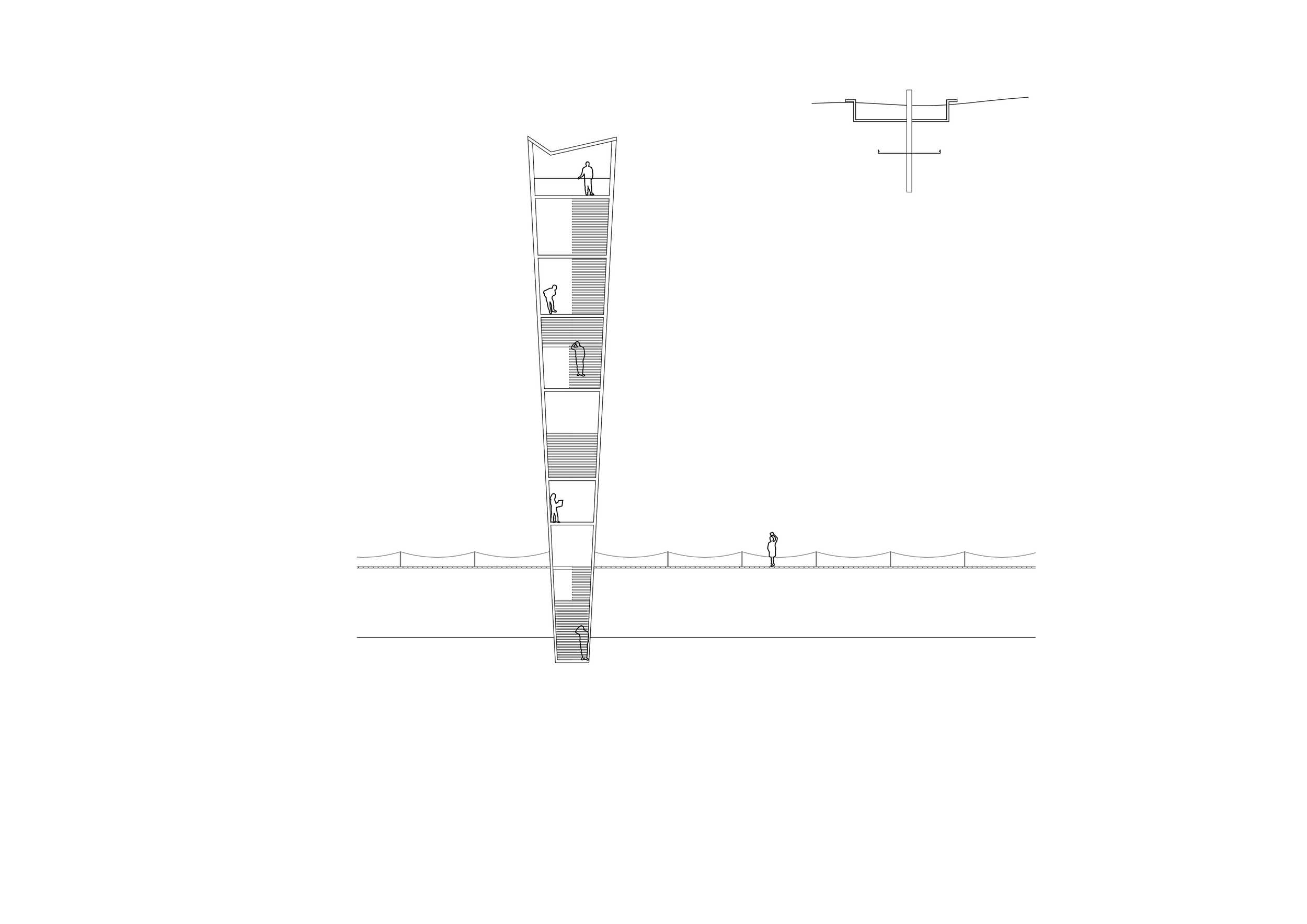
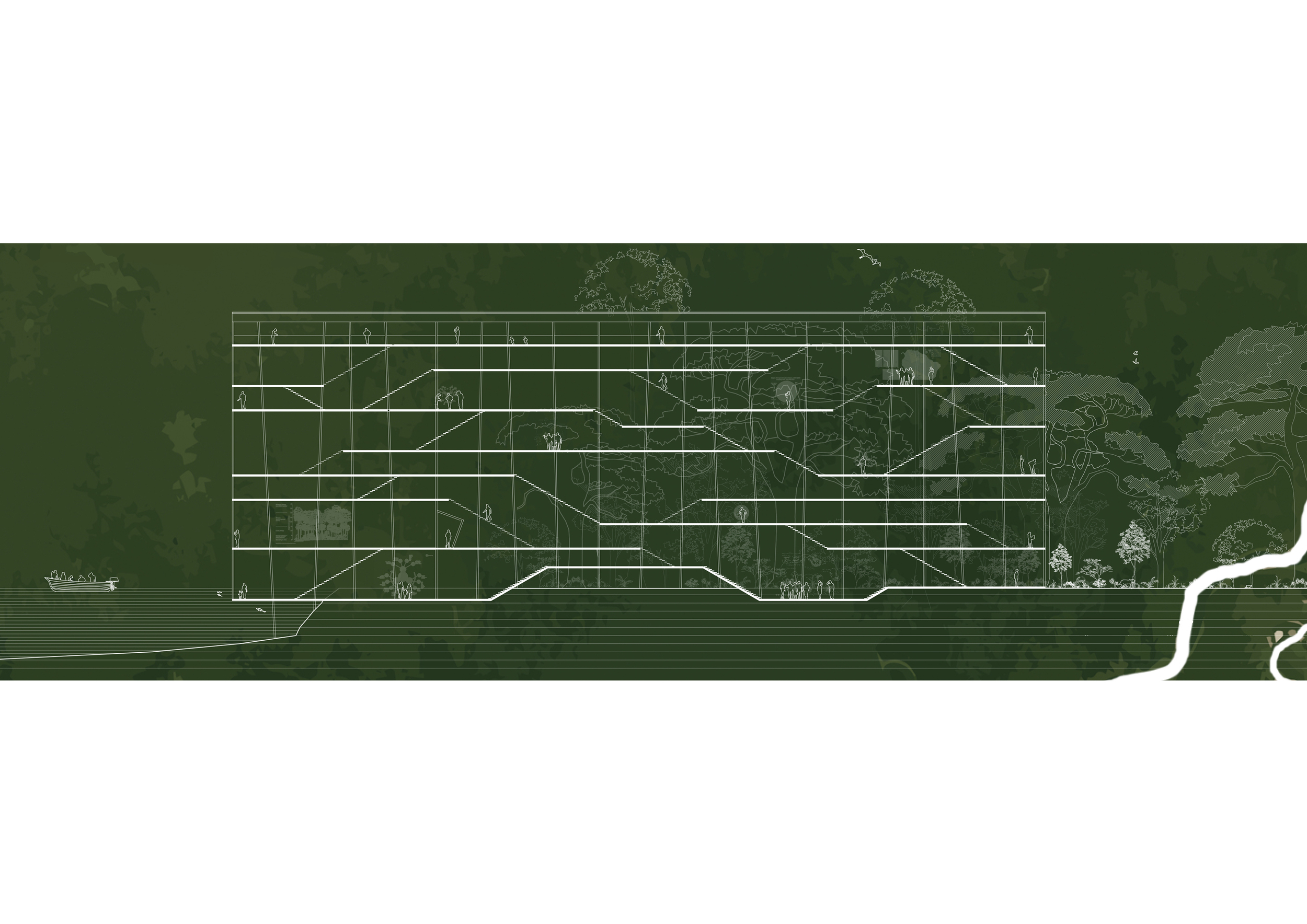
I [AM]AZON
TYPOLOGY: NATURAL OBSERVATORY
LOCATION: AMAZON RAINFOREST
ARCHMEDIUM COMPETITION 2014
TEAM: LAURENT ROSSET, GEERTE BAARS
The Amazon is a vast region located in the central northern part of South America comprised of the Amazon Basin rainforest. The Amazon rainforest, considered one of the seven natural wonders of the world, is the largest rainforest on the planet. It is believed to cover 6 million km²distributed over eight different countries, of which the largest areas belong to Peru, Colombia and Brazil, followed by Bolivia, Ecuador, Guyana, Venezuela andThe Amazon is a vast region located in the central northern part of South America comprised of the Amazon Basin rainforest. The Amazon rainforest, considered one of the seven natural wonders of the world, is the largest rainforest on the planet. It is believed to cover 6 million km²distributed over eight different countries, of which the largest areas belong to Peru, Colombia and Brazil, followed by Bolivia, Ecuador, Guyana, Venezuela and Surinam. The Amazon is known as one of the regions with the greatest biodiversity in the world.
The high temperatures favour the development of thick and exuberant vegetation that is always green. The Amazon has been named the “Lungs of the Earth”, based on the fact that it maintains a climatic quilibrium on the planet by continuously recyclingCO2intoO2.
The entire wet tropical flora of South America is found in the Amazon rainforest. There are innumerable species of plants that have yet to be classified, thousands of species of birds, countless amphibians and millions of insects. In fact, 20% of the species of birds and plants on the planet can be found in the Amazon rainforest.
The Amazon rainforest grows around the Amazon River and its drainage basin. The Amazon River has the largest water flow and is the longest in the world, stretching for more than 6,800 km. The majority of its length follows a serpentine path through the jungle, creating a network of channels and many islands. The average depth of the Amazon is 50 meters and its width varies between 1.5 and 3 km. Its drainage basin is also the largest in the planet. It originates at the base of the Nevado Mismi mountain peak in Peru, at an altitude of about 5,170 m, crossing Colombia, and ends on the Brazilian coast. The Amazon river system has more than one thousand major tributaries, 25 of which are more than 1,000 km long. The river system is comprised of more than 100,000 km of rivers that make up the Amazon Basin, upon which
the jungle depends for its existence. About 50% of the precipitation in this region is produced by this forest system.
The main economic activities in the basin are based on the massive exportation of rubber plant and wood, which lead to a great deal of deforestation in the region, one of the greatest threats to the Amazon.
The objective of this competition for students and young professionals of Architecture and Design, named theNature Observatory of Amazonia (NOA), is to come up with ideas for the creation of a centre in which the Amazon ecosystem can be learned about and observed through intimate contact with nature.
The Nature Observatory of Amazonia (NOA) seeks to become an innovative reference for the dissemination of knowledge about the biological and cultural diversity of the natural environment of the Amazon, providing spaces for educational participation in environmental activities, as well as becoming an interesting stop on the tourism route along the Amazon River.
The project should establish a close dialogue with the landscape and natural surroundings of this unique region of the planet and be highly self-sufficient and sustainable. The idea is to create a space which facilitates the relationship between its visitors and nature, a space which stimulates eco-tourists and invites the public to learn about the importance of taking care of the environment.
